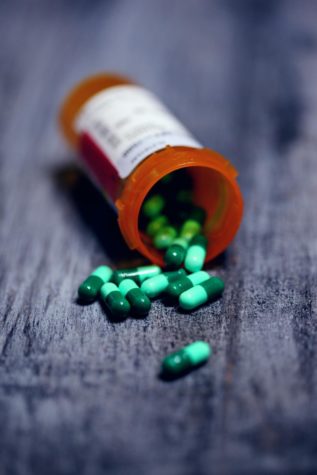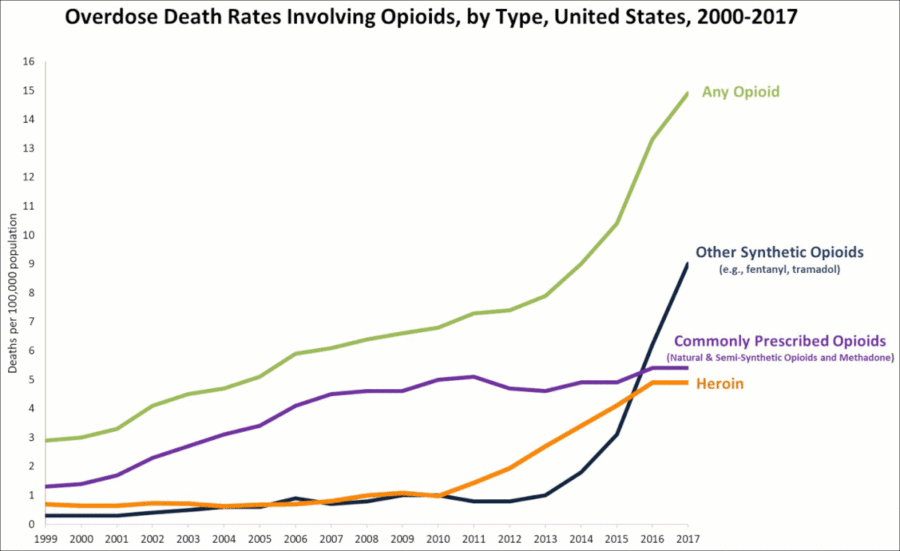Opioid Epidemic
Will we ever escape the plague of perscription drugs in this country?
An opioid epidemic is when opioid drugs become addictive and misused with significant medical, social, and economic consequences, including overdoses that result in death. Back in the 1990’s, medical communities were told that patients would not become addicted to opioid pain killers, and healthcare providers started prescribing them at a higher rate. In the beginning of 2017, 47,000 Americans died because of opioid overdose. Obviously, the technology of the time failed to predict the future epidemic.
Many people in the U.S. are dying after overdosing on opioids and the misuse of opioids is a serious crisis in America. 1.7 million U.S. citizens suffered from substance use disorders related to prescription opioids. This problem is felt by everyone in America. Even students at Lafayette, like sophomore Dnijah Sparks, have strong opinions on the issue. When asked about the opioid issue, she said, “The opioid addiction is bad. It leaves a negative impact on young people’s lives, and it is not worth dying over. More doctors need to do more about people dying from opioid overdose and the misuse of opioids.”

According to the Department of Health and Human Services, 21- to 29%, of patients prescribe opioids misuse them. 12% of these patients develop an opioid related disorder. Due to the opioid crisis, the health department and human services are focusing on “advancing better practices for pain management, providing support research on pain and addiction, improving access to treatment and recovery services, and promoting use of overdose-reversing drugs.” If nothing is done we can expect as many as650,000 people will die within the next 10 years from opioid overdoses.
Opioids attach to proteins called opioid receptors on nerve cells in the brain, spinal cord, gut and other body parts. When this happens, opioids block pain messages sent from the body through the spinal cord to the brain. Although, opioids heal the pain, the risk of addiction is extremely high. There are dangerous side effects of opioids, too, including sleepiness, constipation, and nausea, as well as more serious side effects that can be deadly such as shallow breathing, slowed heart rate, and loss of consciousness.

Opioids can make your body and your brain believe that the drug is necessary for survival and that you cannot live without it. There are different types of opioids: codeine, hydrocodone, oxycodone, oxymorphone, and morphine. These can all be prescribed by doctors in pill form, but can also be taken as lollipops, or by injection.
People suffering from drug use disorder need treatment. This means therapy, medications, medical procedures, working with specialists, and the use of methadone. Methadone helps alleviate symptoms and withdraw cravings. There are different kinds of counseling to treat opioid misuse and addiction. Individual counseling includes setting goals, cognitive-behavior therapy helps you stop negative patterns, motivational therapy helps build up motivation to stick to your treatment plan, and family counseling has family members and friends that are close to you help you repair and improve your relationships. Counselors can also refer you to other resources.
On November 6, 2019 Gerod Buckhalter, implanted a brain stimulation to treat opioid addiction. This intervention, designed to alter functions in the circuit of a persons brain, offers a hope of preventing people’s opioid addiction from worsening. The health department and more doctors, need to look more into the opioid epidemic and prevent more people from misusing opioids.




